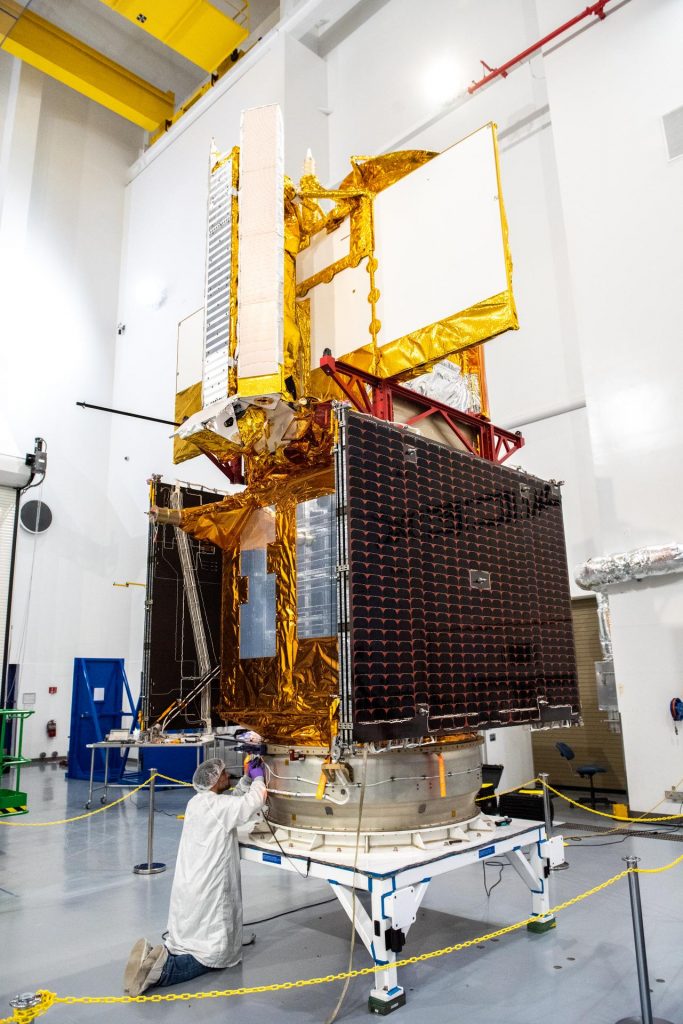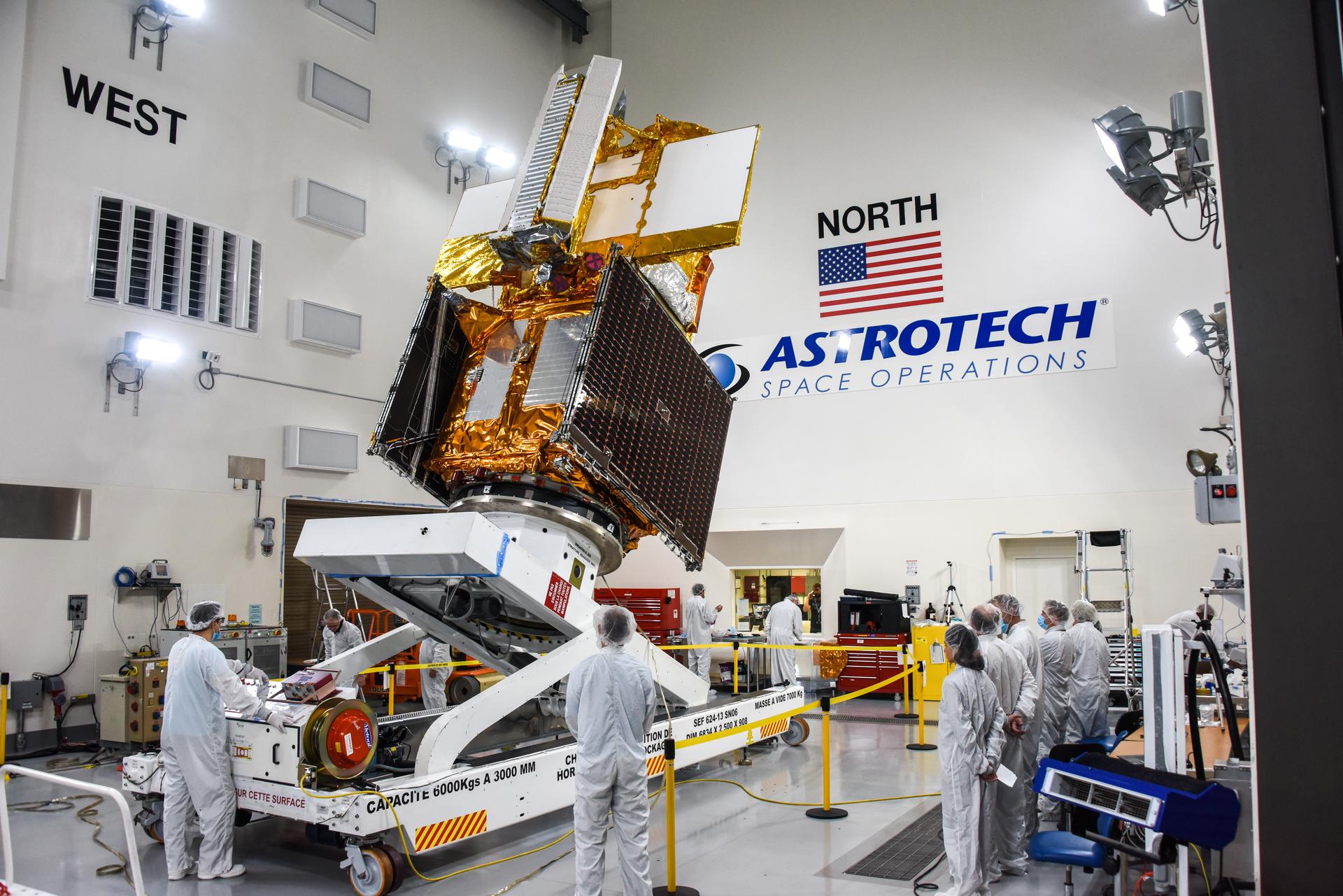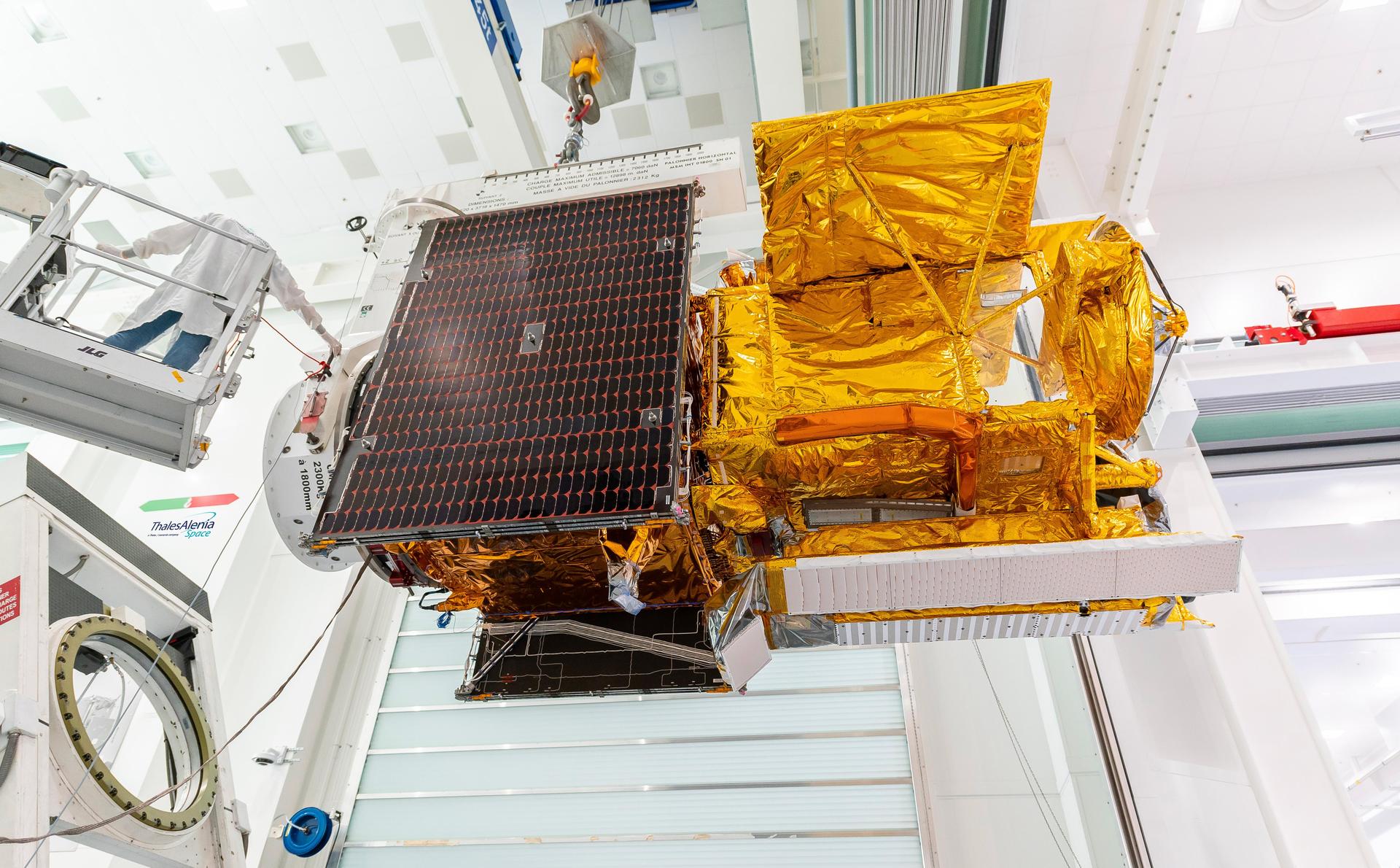Meteorologists with the U.S. Space Force’s Space Launch Delta 30 Weather Squadron are predicting a 100% chance of favorable weather conditions for launch, with no primary weather concerns.
Tag: Launch Services Program
NASA Updates SWOT Launch Date, TV Coverage
NASA, the French space agency Centre National d’Études Spatiales, and SpaceX now are targeting 3:46 a.m. PST on Friday, Dec. 16, for launch of the Surface Water and Ocean Topography (SWOT) mission.
After SpaceX’s Falcon 9 rocket went vertical on the pad at Space Launch Complex 4 East (SLC-4E) at Vandenberg Space Force Base in California, teams identified moisture in two Merlin engines on the rocket’s first stage booster. Teams completed inspections of the rocket’s engines today, but will use the additional time to complete data reviews and analysis before a launch attempt.
The SWOT satellite is healthy, and the weather forecast remains favorable for liftoff on Friday morning. Live launch coverage will begin at 6 a.m. EST (3 a.m. PST) on Friday on NASA Television, YouTube, Twitter, the NASA app, and the agency’s website.
Flight Readiness Review Complete, SWOT Satellite Secured in Payload Fairing

NASA, SpaceX, and Surface Water and Ocean Topography (SWOT) launch managers met today, Dec. 9, to conduct a Flight Readiness Review (FRR) at Vandenberg Space Force Base in California. During the FRR, teams provided an update on the mission status, closed out actions from previous readiness reviews, and certified the readiness to initiate final launch preparation activities.
A collaboration between NASA and the French space agency Centre National d’Études Spatiales (CNES), with contributions from the Canadian Space Agency (CSA) and the UK Space Agency, SWOT will be the first satellite to survey nearly all water on the Earth’s surface. Its instruments will observe the ocean’s surface topography in fine detail, as well as measure how bodies of water change over time.
Encapsulated inside the SpaceX Falcon 9 rocket’s payload fairing, SWOT is now ready for its next major milestone. Over the next couple of days, technicians will horizontally integrate the encapsulated satellite to the Falcon 9.
Liftoff is scheduled for 3:46 a.m. PST on Thursday, Dec. 15, from Vandenberg’s Space Launch Complex-4 East. NASA’s Launch Services Program (LSP), based at the agency’s Kennedy Space Center in Florida, is managing the launch service.
NASA’s Surface Water Satellite to Launch Thursday, Dec. 15

NASA, the French space agency Centre National d’Études Spatiales, and SpaceX are now targeting 3:46 a.m. PST Thursday, Dec.15, for the launch of the Surface Water and Ocean Topography (SWOT) satellite. The new date allows for additional time to complete prelaunch processing and checkouts of the SpaceX Falcon 9 rocket.
SWOT will be NASA’s first global survey of nearly all water on Earth’s surface. Scientists plan to use its observations to better understand the global water cycle, furnish insight into the ocean’s role in how climate change unfolds, and provide a global inventory of water resources.
The SWOT mission is a collaborative effort between NASA and the French space agency with contributions from the Canadian Space Agency and the UK Space Agency.
SWOT will launch from Space Launch Complex-4 East at Vandenberg Space Force Base in California.
International SWOT Mission Now Targeting Dec. 12 Launch

NASA, the French space agency Centre National d’Études Spatiales (CNES), and SpaceX are now targeting Monday, Dec. 12, for the launch of the Surface Water and Ocean Topography (SWOT) satellite. A SpaceX Falcon 9 rocket will launch SWOT from Space Launch Complex-4 East at Vandenberg Space Force Base in California.
After considering the schedule for completion of the satellite build, transportation of the SWOT spacecraft from France to Vandenberg , and carrying out the remaining launch campaign tasks, the team determined that additional time was needed to conduct these activities and ready the satellite for launch.
SWOT is the first satellite mission that will survey nearly all water on Earth’s surface. Its instruments will measure the height of water in the planet’s lakes, rivers, reservoirs, and the ocean in higher definition than ever before. This will help to inform water equity and water management decisions, provide new insights into Earth’s water and energy cycle, and help prepare communities for rising seas and changing coastlines in a warming climate.
Satellite to Study Earth’s Water Arrives at Launch Site

The Surface Water and Ocean Topography (SWOT) satellite arrived at Vandenberg Space Force Base in California, where teams will begin final preparations for the spacecraft’s launch in December on a SpaceX Falcon 9 rocket from Space Launch Center-4 East.
SWOT is the first satellite mission that will observe nearly all water on Earth’s surface, measuring the height of water in the planet’s lakes, rivers, reservoirs, and the ocean. SWOT’s instruments will be able to resolve ocean features like currents and eddies less than 60 miles (100 kilometers) across, lakes and reservoirs larger than 15 acres (6 hectares), and rivers wider than 330 feet (100 meters) across.
NASA’s Jet Propulsion Laboratory in Southern California built the scientific payload. In June 2021, JPL shipped the payload to France, where a multinational team integrated the Ka-band Radar Interferometer (KaRIn) and other finely tuned instruments with the satellite bus.
On Oct. 16, SWOT arrived at Vandenberg from France aboard a U.S. Air Force C-5 Galaxy aircraft and moved to the Astrotech Space Operations facility to begin launch processing. In the coming weeks, SWOT will undergo many steps in preparation for liftoff. Teams must encapsulate the satellite in a protective payload fairing, mate it to the rocket, and transport it to the launch pad before it’s ready to launch into space.
Once in orbit, SWOT will collect data from the ocean, helping researchers better understand how seawater absorbs atmospheric heat and carbon, a process that affects global temperatures and climate change. This data will also help researchers better understand coastal sea levels and, ultimately, how sea surface height will interact with a changing climate to affect things like storm surges.
SWOT will also provide the first comprehensive global survey of freshwater lakes, rivers, and reservoirs from space. The satellite will measure the height of the water in these water bodies, as well as their surface area, or extent. By helping track changes in water volume over time, the data will better equip scientists and water resource managers to monitor how much water flows into and out of Earth’s freshwater bodies.
SWOT is a collaboration between NASA and the French space agency Centre National d’Études Spatial (CNES), with contributions from the Canadian Space Agency (CSA) and the UK Space Agency. NASA’s Launch Services Program, based at the agency’s Kennedy Space Center in Florida, is managing the launch service.
